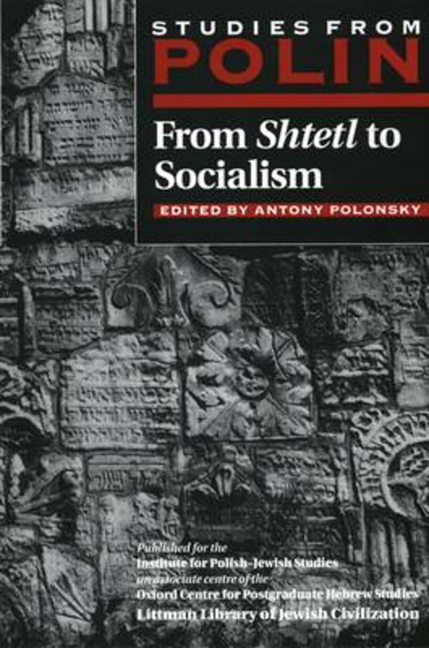Book contents
- Frontmatter
- Dedication
- Editors and Advisers
- Polin
- Polin: Studies in Polish Jewry
- Acknowledgements
- Contents
- List of Maps
- Introduction
- PART I PRE-PARTITION POLAND (to 1795)
- PART II THE NINETEENTH CENTURY
- PART III BETWEEN THE TWO WORLD WARS
- PART IV THE SECOND WORLD WAR
- PART V AFTER 1945
- Notes on Contributors
- Chronological Table
- Maps
- Glossary
- Index
Introduction
- Frontmatter
- Dedication
- Editors and Advisers
- Polin
- Polin: Studies in Polish Jewry
- Acknowledgements
- Contents
- List of Maps
- Introduction
- PART I PRE-PARTITION POLAND (to 1795)
- PART II THE NINETEENTH CENTURY
- PART III BETWEEN THE TWO WORLD WARS
- PART IV THE SECOND WORLD WAR
- PART V AFTER 1945
- Notes on Contributors
- Chronological Table
- Maps
- Glossary
- Index
Summary
Gentle Poland, ancient land of Torah and learning From the day Ephraim first departed from Judah
From a selihah by Rabbi Moshc Katz GcralWhat then is the meaning of the era of the Jews in Poland in the context of the history of the Jewish people? … I f the concept of Jewish history can be said to have had a plastic gestalt, then Polish Jewry, individually and collectively, was the mould which formed it. Such was perhaps the dialectic of its fate and the meaning of its demise. Jewish history had reached in Polish Jewry one of the peaks of its arduous uphill climb.
Ycshaia Trunk, PoylnIn recent years there has been a great revival of interest in the history of Polish Jewry. By the early seventeenth century this community had become the largest in the Jewish world, and in the years of its flourishing it gave rise to a unique religious and secular culture in Hebrew and Yiddish and enjoyed an unprecedented degree of self government. In a penitential prayer composed in the aftermath of the massacres which occurred during the Cossack uprising of the midseventeenth century, Rabbi Yom-Tov Lipman Heller looked back to a golden age, recalling ‘Poland, a country of royalty where we have dwelled from of old in tranquil serenity’. Yet even after the devastating effect of these upheavals, which also marked the beginning of the downfall of the Polish-Lithuanian Commonwealth, the Jewish community continued to increase in size and was able to recover some of its vitality. The partition of Poland at the end of the eighteenth century divided Polish Jewry between the Tsarist, Habsburg, and Prussian states. Throughout the nineteenth century, the lands of the former Polish-Lithuanian Commonwealth remained the home of the largest concentration of Jews in the world. It was here that the new religious movement of Hasidism emerged and gained a mass following and that later those movements developed—Zionism, Socialism, Neo-Orthodoxy—which were to transform the Jews’ perception of themselves. From the 1860s the swelling tide of emigration from these lands took the cultural patterns of Polish Jewry to western Europe, the New World, and the Antipodes.
- Type
- Chapter
- Information
- From Shtetl to SocialismStudies from Polin, pp. xiii - xxxivPublisher: Liverpool University PressPrint publication year: 1993

